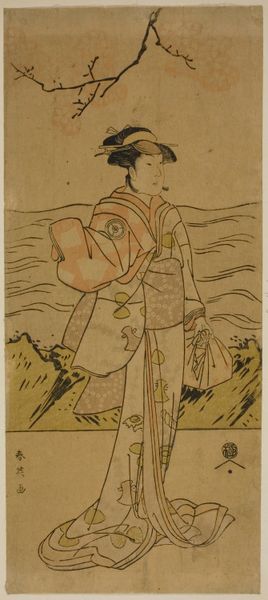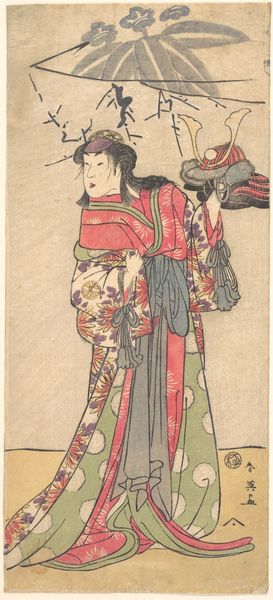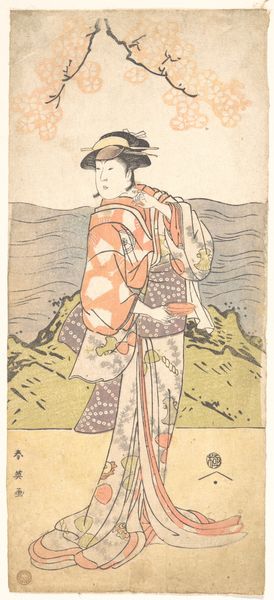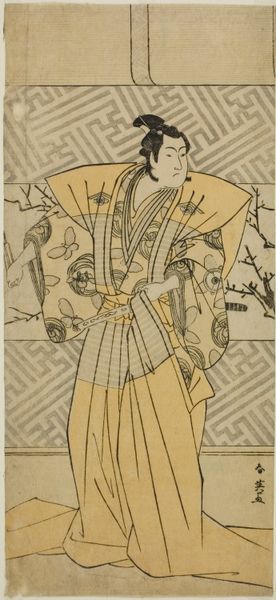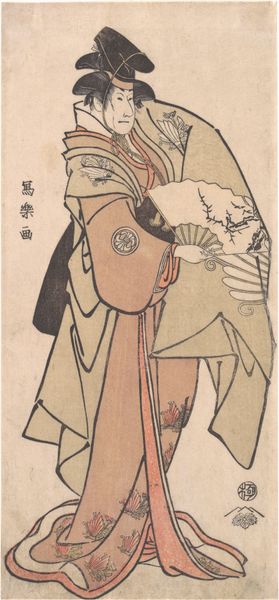
Dimensions: 434 × 99 mm (image/block); 505 × 153 mm (sheet)
Copyright: Public Domain
Curator: Welcome. Here we have Helen Hyde's 1901 woodblock print, “Mother and Child,” currently residing at the Art Institute of Chicago. Editor: There's a serene intimacy radiating from this piece. The gentle lines and soft hues immediately evoke a feeling of maternal warmth. Curator: Indeed. Notice how Hyde uses a muted palette, primarily blues and browns, to create a sense of calm and tenderness. The vertical composition, typical of ukiyo-e prints, further accentuates the close connection between mother and child. Editor: The historical context is particularly poignant. Hyde, an American artist working in Japan, navigates the complex terrain of cultural exchange and representation. We must ask how her positionality as a Western woman informs her depiction of Japanese motherhood. Curator: A valid point. The print showcases elements of Impressionism in its subtle gradations of color and light, and yet it deliberately aligns itself with traditional Japanese aesthetics through its subject matter and technique. Look closely at the curvilinear lines delineating the garments. Editor: Beyond aesthetics, this print reflects broader discourses surrounding motherhood and domesticity at the turn of the century. While appearing to be a universal portrayal, the image also becomes a document of its time, laden with culturally specific ideals. We can further see an echo of the Madonna and Child theme popular in the west. Curator: Consider also how Hyde manipulates the medium of the woodblock print. The lines are clean, almost classical in their execution. Editor: Yes, it begs the question, does it re-inscribe or subvert traditional roles? Curator: Perhaps it accomplishes both, acknowledging the traditional aesthetic while simultaneously filtering it through her personal lens. Editor: Precisely. This nuanced interplay makes it a rich subject for discussion, complicating simplistic readings and pushing us to reflect on the power dynamics inherent in cross-cultural representation. Curator: This exploration reveals how formal elements intertwine with cultural significance to enrich our understanding of art. Editor: Absolutely. "Mother and Child" invites us to reflect on both the beauty and complexity of cultural exchange and its historical implications.
Comments
No comments
Be the first to comment and join the conversation on the ultimate creative platform.





